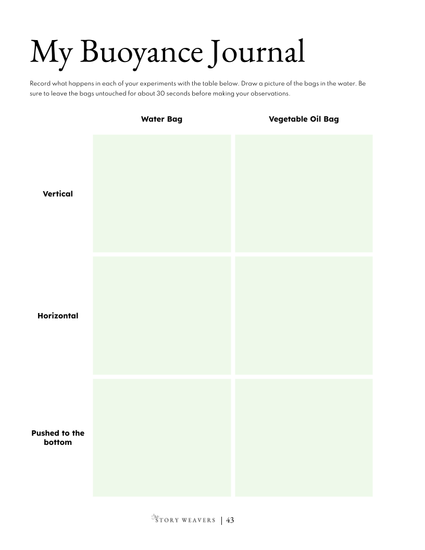We Do Meaningful Field Trips. Differently.
- The Story Weavers Team
- 2 days ago
- 8 min read
How to Get the Most Out of Your Story Weavers Field Trips
Great field trips don’t happen by accident—they’re designed. Below is a simple system you can follow with any The Story Weavers Field Trip Guide to maximize learning, deepen family connection, and capture it all for memory and reporting.
How can you, as a parent and guide, make the most of these experiences?
Let’s dive into how to get the deepest value — academically, meaningfully, and for your homeschool records — using Level 3 Book 5 Aquarium Field Trip: “How does a shark’s body shape help them hunt and survive?” as our example.

But first: Where can you find the field trips?
Inside every monthly book includes its own field trip — found near the beginning of the book.
Also because our community of homeschool families asked for an easier, on-the-go option, in your Bonus Book Section, there is a single downloadable PDF that gathers all the trips from your level into one convenient book.
A. Make It Count Academically (Learning That Sticks)
Why do we include a big question?
When a child feels curious, their brain releases dopamine — the same chemical that powers motivation and memory. Studies from UC Davis show that when learners are curious, they absorb information more deeply and more joyfully.
That’s why we always begin with a Big Question. Instead of telling your child, “We’re learning about sharks,” you invite them to think like a scientist: How does a shark’s body shape help them hunt and survive?
This is called inquiry-based learning, and it’s one of the most effective approaches in education. According to research from Harvard’s Project Zero, open-ended questioning helps children build critical thinking skills and long-term understanding.
Here’s how to structure your learning around that curiosity:

1) Before You Go: Prime the Brain
Read the article (Why Do Sharks Swim So Well?) together. Children crave predictability — but not through rigid structure. They find it through coherence. When the world makes sense, they feel safe enough to explore it.
That’s why our field trips are built on a loop: Question → Experience → Reflection.
Every guide closes that loop intentionally, giving children a sense of completion. The brain needs closure to solidify learning. Without it, experiences drift away.
Parent Amplifier:
Ask your child to make a prediction: “Which part of a shark’s body helps it move the fastest?”
Let them jot or sketch an early idea in their Aquarium Journal.
This activates prior knowledge — a crucial step in retention.
Prediction + curiosity primes attention and improves memory.
Shark example:
Big Question: How does a shark’s body shape help them hunt and survive?Prediction prompt: “What do you think, which part of a shark’s body helps it move the fastest?”
Shipwreck (L3B3) example:
Big Question: How do forces affect the vehicles we use every day?Prediction prompt: “Where will we see pushes and pulls at work today?”
During the Trip: Observe Like a Scientist
Use Mission 1 and Mission 2 as your anchor. Have your child note how fins, tails, and body shape differ between shark species and other sea creatures.
Parent Amplifier
Encourage comparative observation:
How do their tails move? Do they swim in short bursts or glide smoothly? How do their fins help them turn or stay balanced? Then, compare these movements to other sea animals you see, like rays, sea turtles, or fish with different body shapes.
Ask guiding questions such as: “Do you notice how the shark’s tail moves differently from the stingray’s fins?” “Why do you think the shark’s body is shaped like a torpedo while the turtle’s is rounder?”
This develops analytical and descriptive thinking — noticing details, comparing movement, and forming early scientific conclusions.
There’s always a “Notes” page in your Field Trip Guide — use it! Encourage your child to jot down quick observations, draw sketches, or record any simple measurements they make. Writing and drawing during the experience strengthens focus and recall later.
In most field trips, there are hands-on data collection activities. For example, in L3B3, they have the "My Aquarium Journal." Their aim: Observe several different shark species and look closely at how their bodies move. Record each species name below, draw a picture of its body shape, and describe how its tail and pectoral fins move. Some trips will go more into observation, others real measurements bring math, physics, and observation together — turning curiosity into evidence.
Parent Amplifier
On your way home or shorthly after the trip: Encourage your child to tell about the trip to another family member or friend in rich details and enthusiasm. Ask your child to explain one thing they just learned and what they experience. “Explain to me like I wasn’t there.”
Self-explanation massively strengthens understanding.
4) Connect What they experienced
Each Story Weavers Field Trip includes follow-up explorations designed to expand what your child saw into something they can explain.
For this book, that means diving into:
The science experiment, “Why Do Sharks Float?” — testing buoyancy using water and oil to model a shark’s liver.
The article, “Why Do Sharks Swim So Well?” — reading to gain vocabulary and scientific background about shape, drag, and efficiency.
By engaging with these, your child shifts from observer to investigator.
They begin to see that what they witnessed at the aquarium isn’t random — it fits into a system of physical principles that scientists can test and explain.
Parent Amplifyier
When you sit down together, start with open-ended reflection rather than correction.Ask your child to describe what they saw, using their own words:
“What did you notice about how the shark moved?”“Why do you think that shape helps it swim so smoothly?”
This kind of informal conversation activates what psychologists call elaborative rehearsal — making meaningful connections to prior knowledge. Every time your child verbalizes what they noticed, they’re strengthening the neural pathways that store memory.
Encourage them to link ideas across contexts, too (to earlier books for example):
“Remember how the sailboats moved with wind in the Shipwreck Field Trip (Book 3) ? How is that like or unlike the shark’s tail movement in water?” (Book 5)
These cross-connections build flexible, transferable understanding — one of the hallmarks of deep learning.
5) Summing it all together
After completing the reading and experiment, invite your child to circle back to the Big Question: “How does a shark’s body shape help them hunt and survive?” Encourage them to include evidence from both their aquarium visit and the buoyancy experiment.
This becomes a complete piece of learning evidence — observation, explanation, and reasoning.
This reflection step activates metacognition — thinking about their own thinking — which is proven to dramatically increase comprehension and memory retention. Depending on their level, encourage your child to focus on one or two specific writing skills during their reflection — perhaps adding richer descriptive language, improving sentence structure, or emphasizing scientific precision by including data or evidence. Research on cognitive load theory suggests that focusing on a few clear goals at a time helps students write with greater depth and confidence, rather than becoming overwhelmed by too many expectations at once.
Parent Amplifyier
If your child enjoys creative expression, let them go further:
Write a short story from the perspective of a shark.
Draw a labeled diagram of how fins and body shape work together.
Make a voice recording explaining the buoyancy experiment results.

The Story Weavers not collecting facts —
we’re creating moments your family will remember.
B. Make It Meaningful (Moments Your Family Will Remember)
Let's add some parent amplifiers, by looking at the book The Power of Moments by Chip and Dan Heath and giving some ideas on how to make your trip even more meaningful for your family. They discovered that the most unforgettable experiences share one thing: they rise above the everyday. Acoording to here are four ingredients that reliably elevate experiences: Elevation, Insight, Pride, and Connection. Let us dive into Elevation more deeply with examples for your The Story Weavers field trips.
Elevation
They call these moments of elevation, and the good news is — we can design them.
The Heaths suggest three simple ways to do it:
Boost sensory appeal – make it feel richer, louder, more alive.
Raise the stakes – add challenge, urgency, or purpose.
Break the script – do something unexpected that surprises the brain.
Here’s how you can build each one into your Story Weavers field trips — and how we do it in this month’s Shark Field Trip.
Boost sensory appeal
We remember what we feel. When you heighten the senses — sight, sound, touch, smell — you make the moment more vivid and unforgettable.
Try this on any field trip:
Encourage your child to describe what they notice with each sense: “What do you hear? Smell? Feel?”
Bring a small prop or texture that connects to the theme — a feather at a bird sanctuary, a rock sample for geology.
Give them one minute of “silent noticing” time to focus on one sense only.
In the Shark Trip:
Play a short recording of ocean sounds as you walk into the aquarium to set the mood.
Have your child describe the movement of water in sensory terms — “smooth,” “shimmering,” “fast like glass.”
If you have access to a shark-skin sample or replica, let them touch it and record how it feels in their field-trip journal.
Sensory contrast tells the brain: “This is special — pay attention.”
Raise the Stakes
Adding a small challenge turns a passive visit into an adventure. A bit of tension or goal-setting increases focus and motivation, especially when kids feel like they’re on a mission.
Try this on any field trip:
Set a timer to find specific things — “You have five minutes to spot three examples of symmetry” or “Find one item that doesn’t belong.”
Create a competition — parent vs. child, sibling vs. sibling, or “who can explain it best.”
Time a small challenge — “You have ten minutes to spot as many artifacts made of metal as you can.”
Create a ‘mini-presentation’ goal — your child will share one discovery with a friend, grandparent, or homeschool group later.
Add a stretch goal — ask five strangers a survey question (“Which exhibit do you like best?”) or invite your child to ask a museum staff member to explain something in their own words.
Each of these moments raises the emotional stakes just enough to transform attention into engagement. The element of purpose and responsibility creates what educators call “productive stress” — the sweet spot where learning feels exciting, not overwhelming. When children rise to a small challenge, pride anchors learning in memory.
Break the script
Creating “a jolt of unexpected delight that snaps people out of autopilot.” For homeschool parents, that means doing something that makes the day feel a little bit magical, surprising, or emotionally charged — something your child didn’t see coming. To create a moment of elevation, do something unexpected. Surprise your child, flip a pattern, or turn the ordinary into a little bit of theater. These small, unexpected twists are what lift a day from “nice” to “I’ll never forget that.”
Try this on any field trip:
Stage a dramatic start. Don’t tell your child where you’re going — blindfold them for the last five minutes of the drive and reveal the location with flair.
Hide a surprise clue or reward. Tape a small envelope inside their journal: “Open when you spot something that makes you go ‘whoa.’” Inside might be a sticker, a riddle, or the next challenge. Or hide a surpise at the location (safe and stuff).
Flip the roles. Tell your child, “You’re the teacher today. My job is to learn from you.” Ask them questions and take “notes” on what they say.
Change the setting mid-trip. Halfway through, have a spontaneous snack picnic on the floor or under a tree — unexpected comfort in an unexpected spot.
Invent a ritual or random rule. “Every time we see something blue, we have to whisper a fact.” Or, “Every third step, we switch accents.” Ridiculous? Yes. Memorable? 100%.
Why it works: Breaking routine activates surprise, humor, and curiosity — all of which release dopamine and norepinephrine, the brain’s “pay attention” chemicals. These moments tell your child: “Something special is happening — stay awake to the world.”
You don’t need perfect plans to make field trips meaningful. You need a spine (Big Question → Action → Reflection), a moment (First-Look Pause or a tiny experiment), and a way to remember (Elevation with your 5 Senses, raising the stakes or breaking the script). Your Story Weavers Guide gives you the bones—these practices add the muscle and the heart.
.

























Comments